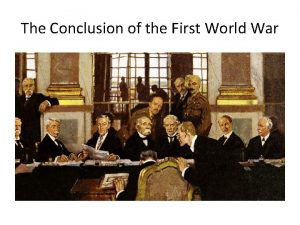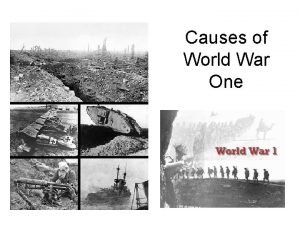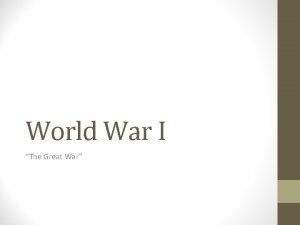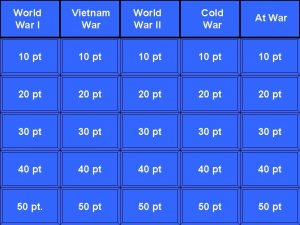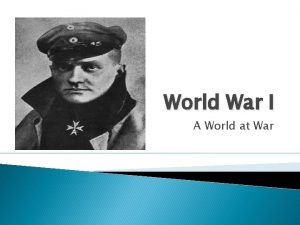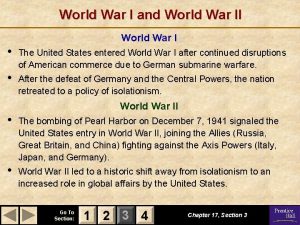The Conclusion of the First World War First












- Slides: 12

The Conclusion of the First World War

First World War: The Road to Peace Timeline of Events • March 3, 1917: Soviet Russia concludes separate peace negotiations with Germany in Treaty of Brest-Litovsk • April 6, 1917: US declares war on Germany • November, 1917: The Bolsheviks under Lenin seize control in Russia • March 21, 1918: Germany launches “Spring Offensive”, eventually mounting five major offensives against Allied forces, starting with the Battle of Picardy against the British • July 18, 1918: Allies counterattack against German forces, seizing initiative • August 8, 1918: Successful Amiens offensive forces all German troops back to the Hindenburg Line; "black day" for German army

Treaty of Brest-Litovsk

First World War: The Final Days 1918 September 29, 1918: Bulgaria concludes armistice negotiations. October 30, 1918: Turkey concludes an armistice with the Allies. November 3, 1918: Austria-Hungary concludes an armistice. November 7, 1918: Germany begins negotiations with the Allies November 9, 1918: Kaiser Wilhelm II abdicates, flees to the Netherlands. • November 10, 1918: German Republic is founded. • November 11, 1918: Armistice Day; fighting ceases at 11 am • • •

The Post-War Period: 1919 • January 18: Start of peace negotiations in Paris. • January 25: Peace conference accepts principle of a League of Nations. • February 14: Draft covenant of League of Nations completed. - Canada an independent member nation • May 6: Peace conference disposes of German colonies. • May 7 - June 28: Treaty of Versailles drafted and signed. - Canada signs treaty independent of Britain

The League of Nations • An International alliance for the preservation of peace • Idea of US President Woodrow Wilson, although the United States never joins due to Congressional opposition • Existed from 1920 to 1946 • First meeting held in Geneva, November 15, 1920 with 42 nations represented • Last meeting was held on April 8, 1946; at that time the league was superseded by the United Nations

Treaty of Versailles: Terms Germany had to accept the Blame for starting the war Germany surrendered all colonies to Britain and France Germany returned region of Alsace-Lorraine to France Danzig became a free city Occupation and special status of the Saar region under French control Demilitarization and 15 year occupation of the Rhineland Germans pay reparations of 6. 6 billion GBP Ban of union between Germany and Austria Limiting of Germany’s army to 100, 000 men with no conscription, tanks, artillery, air force, and a navy limited to 6 battleships with no submarines • Germany was forbidden to join the League of Nations and signed the treaty under protest • The United States government refused to ratify the treaty • • •

Germany’s Territorial Losses

Pre-War Map of Europe

Map of Europe Following Versailles and Other Peace Agreements

Sykes-Picot Treaty (May 16, 1916)

